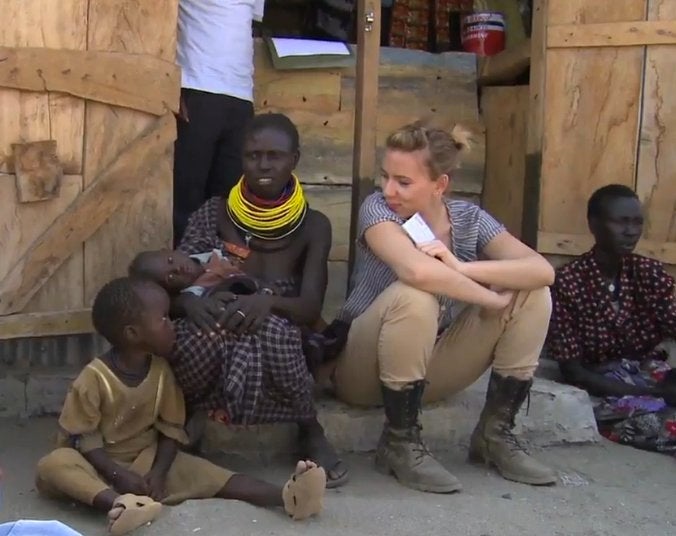
This is the third installment of Scarlett's video journal from her trip to Dadaab, Turkana and Lodwar with Oxfam to shine light on the drought and food crisis that continues to unfold across East Africa. You can view the first two installments here and here, and please visit Oxfam for more information and to help out.
We spent our third and final day outside of Turkana in an area called Katiko, where we met with participants of Oxfam's cash distribution program. Here, people are receiving approximately $25 USD a month, which they spend on school fees, household items and food. This program also supports small traders by providing working capital for the market so that traders can restock and link up with food markets outside of Turkana.
WATCH:
Several months ago I came across an article in the Wall Street Journal about a refugee camp that profoundly struck me. I was aware of the global food crisis, but the statistics this particular article stated were overwhelming. Dadaab, which I had never heard of before, is the largest refugee camp in the world. It was declared full occupancy in 2008, but has received between 600 and 1,500 Somali refugees daily since.
These are victims of political conflict, severe drought and famine, and the population in these camps has now reached roughly 400,000. I tried to wrap my head around what the conditions of that camp must be like, how its occupants were surviving everyday life in the barren, arid landscape with the barest of essentials. How did anyone manage to source food or clean water? And what must the conditions be like in regards to sanitation?
As an Ambassador of Oxfam since 2004, I knew that our organization must have a presence there. Sure enough, I learned that Oxfam has been working in Dadaab since 2009, providing water sanitation, building latrines, digging boreholes, laying pipe and constructing tap stands amongst other aid. We planned a trip for late September and decided to not only highlight the crisis amongst Somali refugees but another global crisis affecting the entire Horn of Africa, the worst drought the area has seen in over 60 years.
Pastoralists, farmers and fisherman have seen their means of survival virtually die off, while entire communities are left in a state of flux and starvation with no means of relief. These communities are dependent on Oxfam's relief for both emergency response and for long term sustainable solutions. The media's spotlight on both of these crises is inconsistent and insufficient. These issues need to be addressed on a global scale immediately, as roughly 13 million people are at risk and most of Southern Somalia has been declared in a state of famine.
I visited Dadaab, Turkana and Lodwar with Oxfam and wanted to write a journal with accompanying pictures for Huffpo. But after one day in the fields, I realized the scale of what we were witnessing was almost impossible to put into words and decided to do a video log over the three days time so that I might shed light on the crisis as well as Oxfam's vitally important work. If you are inspired as I am and are able or would like to contribute to the cause, please help me raise funds by going to oxfamamerica.org/scarlett.
Please remember that no amount is too small and Oxfam's low administrative cost means that the maximum amount goes directly to effecting positive change in virtually millions of people's lives.